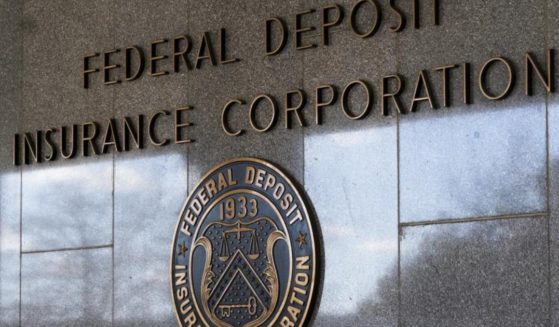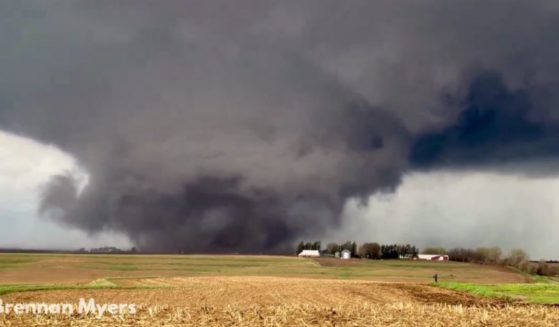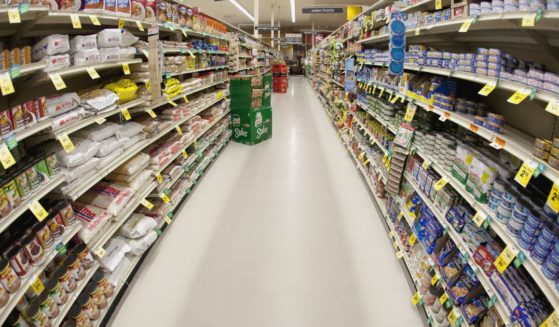Thanks, Biden: Gigantic American Oil Caverns Sitting Empty Will Take Decades to Refill
One of the most egregious things done by the Biden administration was immediately upon inauguration to limit U.S. energy production.
Seven days after Joe Biden swore to uphold the Constitution, he put out an executive order limiting oil and gas leases.
The Biden people hadn’t even put away their formal dresses and gowns from the inauguration festivities when they told America: our party is over and so is yours.
That despite the Trump administration’s economic miracle of achieving what had been unattainable for some 40 years — energy independence.
That probably was the point for the Biden crew — if Trump did it, it must be bad.
Despite the general lawlessness of Biden & Co., there was one law they could not avoid — that of supply and demand.
Even though a slight dip in demand occurred due to the COVID shutdowns, there was not enough supply, and with the Biden energy shutdown, gas prices increased.
But, don’t you know, that was a small price to pay for saving the planet. And reversing that villain Trump.
Besides, the Bidenistas purred, we’re pushing a whole new fleet of electric vehicles you’re going to love.
So pay more for the greater good. Save the planet. Forget Trump. And welcome to Golf Cart Nation.
Except that paying more was turning out to be significant money for the voters, er, consumers.
Monthly gas costs could be approaching monthly car payments. And even Democrats could see something happening out in the swamps and cornfields of Middle America that could be a threat.
So the Biden people came up with a solution — bring gas prices down by increasing supply by tapping the nation’s Strategic Petroleum Reserve.
But think about the first and third words of that. Strategic — as in needed to fuel military for war or to keep the nation running in the event of a petroleum distribution disaster — and Reserve, which means just that, a supply kept back in reserve.
Begun after the 1970s Arab oil embargo, the reserve stabilized U.S. oil supplies in 2005 when Hurricane Katrina disrupted Gulf Coast producers.
It was not designed as a strategic way for Democrats to reserve votes for themselves when their policies threaten to impoverish the middle class and decimate the poor.
So the Biden administration tapped the reserves and whether or not that was the reason, gas prices halted their climb. They also used reserve petroleum to offset market disruption caused by the war in Ukraine.
In all of this, Democrats presumably hope people forget that under Trump gas pump prices at one time approached, according to some rough calculation I did, their early 1970s levels, when adjusted for inflation. (I know, economists, petroleum was a big factor in inflation, but work with me on the general idea).
I’m sure there’s also hope that the public is not aware that not all the petroleum was distributed to the U.S., but some was exported, including to a Chinese company with ties to Hunter Biden.
But now there’s another problem. If we’re not producing oil like we did, and there’s still consumer, military and industrial demand for it, how are we going to refill the Strategic Petroleum Reserve?
Did anybody think of that?
According to Bloomberg, giant Gulf Coast caverns that are supposed to be holding that reserve oil are half empty.
While the Biden administration siphoned off 180 billion barrels in about six months, it will take decades to refill.
Worse, it may not be possible to replace that reserve supply, at its lowest level in 40 years and exhausted to the point its reserve capability is only good for about 18 days.
And, Bloomberg reported, that oil Biden snatched had initially been put in the reserve at a cost of $29.70 per barrel; now it’ll cost about $75 per barrel to replace.
One more thing — the salt caverns used for the petroleum reserve have, in effect, an expiration date. They’re past their 25-year life and are only good for five cycles of emptying and refilling, according to William “Hoot” Gibson, once the system’s project manager.
Yet, Benjamin Salisbury, research director at Height Capital Markets, expressed skepticism about whether the reserves need to be refilled.
“Do we really want to spend $7 billion or $8 billion to refill the SPR if we are still perfectly capable of producing our own oil?” according to Salisbury.
Perhaps. But in light of the COVID disruptions to the just-in-time concepts of supply chain management, the petroleum reserves need to be a priority.
We are no longer in a 2019 world and need to act accordingly. More so when Democrats are in charge.
Truth and Accuracy
We are committed to truth and accuracy in all of our journalism. Read our editorial standards.












